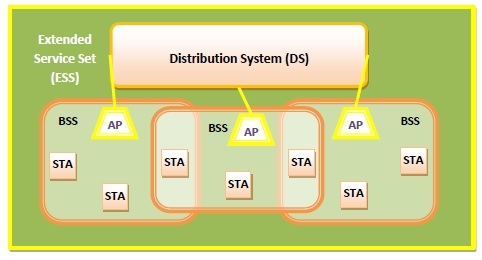
 Data Structure
Data Structure Networking
Networking RDBMS
RDBMS Operating System
Operating System Java
Java MS Excel
MS Excel iOS
iOS HTML
HTML CSS
CSS Android
Android Python
Python C Programming
C Programming C++
C++ C#
C# MongoDB
MongoDB MySQL
MySQL Javascript
Javascript PHP
PHPPhysics
Chemistry
Biology
Mathematics
English
Economics
Psychology
Social Studies
Fashion Studies
Legal Studies
- Selected Reading
- UPSC IAS Exams Notes
- Developer's Best Practices
- Questions and Answers
- Effective Resume Writing
- HR Interview Questions
- Computer Glossary
- Who is Who
The 802.11 Physical Layer
IEEE 802.11 standard, popularly known as WiFi, lays down the architecture and specifications of wireless LANs (WLANs). WiFi or WLAN uses high frequency radio waves instead of cables for connecting the devices in LAN. Users connected by WLANs can move around within the area of network coverage.
IEEE 802.11 Architecture
The physical layer architecture of IEEE 802.11 has the following components −
Stations (STA) − Stations comprises of all devices and equipment that are connected to the wireless LAN. A station can be of two types −
Wireless Access Point (WAP) − WAPs or simply access points (AP) are generally wireless routers that form the base stations or access.
Client. Clients are workstations, computers, laptops, printers, smart phones etc.
Each station has a wireless network interface controller.
Basic Service Set (BSS) − A basic service set is a group of stations communicating at physical layer level. BSS can be of two categories depending upon mode of operation −
Infrastructure BSS − Here, the devices communicate with other devices through access points.
Independent BSS − Here, the devices communicate in peer-to-peer basis in an ad hoc manner.
Extended Service Set (ESS) − It is a set of all connected BSS.
Distribution System (DS) − It connects access points in ESS.


